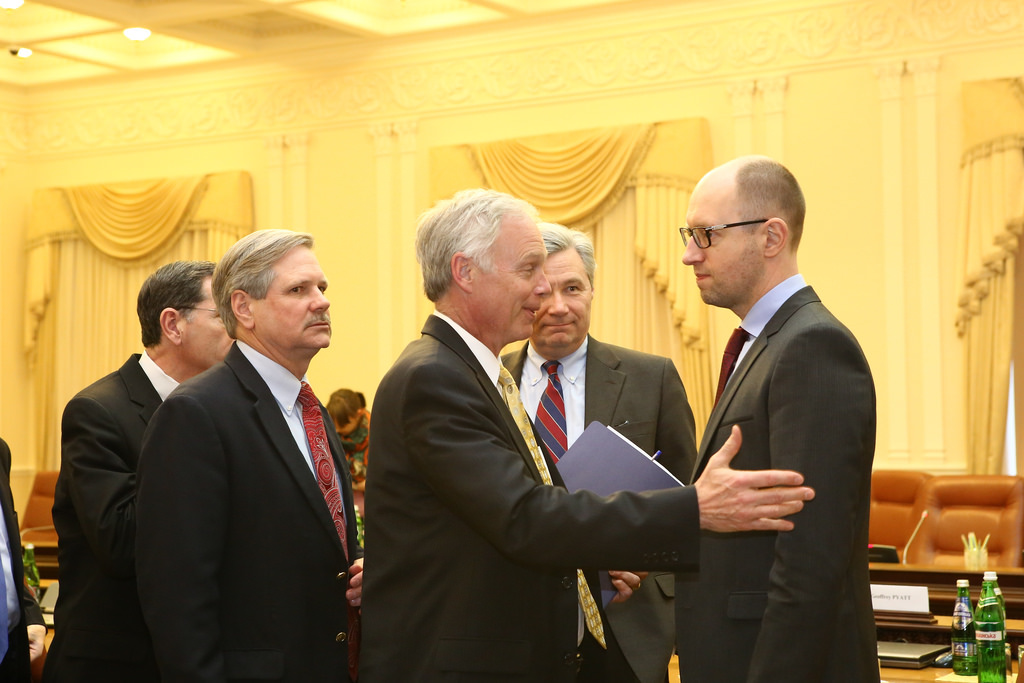
Kenneth Rapoza
.
Ukraine Prime Minister Arseniy "Yats” Yatsenyuk has a future as a U.S. natural gas lobbyist in Washington.
The man made famous by U.S. Assistant Secretary of State Victoria Nuland in February in a leaked conversation with American diplomat Geoffrey Pyatt in Kiev thinks Europe should block Russia’s planned construction of a new gas pipeline. If the new South Stream gas pipeline is built, it will deliver natural gas directly to Russia’s most important customer — Europe — without having to pipe it through that troubling piece of real estate known as Ukraine.
Russia and Ukraine have been locking horns since late 2013, when president Viktor Yanukovych nixed a trade deal with Europe in order to move his country closer to Russia. Protesters in Kiev called for his ouster and he was removed by extra-legal means on Feb. 22. Yatsenyuk immediately took over and the relationship with Russia quickly deteriorated. Yats did as was expected, moving Ukraine closer to the E.U. politically, signing an Association Agreement on March 21 and setting the stage for further economic cooperation. One way Yats would like Europe to cooperate is by stopping Russia from building South Stream, which would make south European deliveries via the Black Sea.
"We call on the European Union to block the South Stream. Ukraine is a reliable transit country, we have fulfilled and will continue to fulfil our obligations,” Yatsenyuk reportedly told the parliament.
Russia’s state owned natural gas producer, Gazprom, launched the pipeline project in 2012 and expects to complete the first line in late 2015. The 15.5-billion-euro project will include four 577 miles of lines ready for Europea-bound natural gas.
Commercial deliveries through this pipeline are expected to begin in the first quarter of 2016, with the pipeline becoming fully operational in 2018, RIA Novosti reported Tuesday.
Russia annually pumps about 100 billion cubic meters of gas to European countries via Ukraine. According to the U.S. Energy Information Agency, 16% of the natural gas consumed in Europe arrived by Russian pipelines in Ukraine. In the past, as much as 80% of Russian natural gas exports to Europe transited Ukraine. This number has fallen to 50%-60% since the Nord Stream pipeline, a direct link between Russia and Germany under the Baltic Sea, came online in 2011, EIA said.
Russia is the second-largest producer of natural gas behind the U.S. and third-largest liquid fuels producer in the world. The U.S. has been trying to convince the E.U. to go with more expensive U.S. LNG, at least as a means to become less dependent on Russia.
As it stands, the U.S. has had problems convincing Europe to tighten the screws on Russia by enforcing tougher sanctions after the March 16 annexation of Ukrainian peninsula Crimea. One of the reasons Europe has been less hands-on in dishing out economic punishment for Russia’s support of separatists movements inside Ukraine is because of its reliance on Russian natural gas.
In May, Russia’s President Vladimir Putin said his country was planning to follow through with South Stream despite Yats’ lobbying against it. Putin also said their North Stream pipeline was also a go, but if Brussels continued to use Ukraine to politically strong arm Moscow, Russia will build the pipeline in countries not yet part of the E.U.
Of course, all of this may be easier said than done.
Natural gas flows through Ukraine vary by season, ranging from almost 12 billion cubic feet per day in the winter to only 6 billion in the summer. An unusually mild winter in 2013 meant reduced natural gas flows through Ukraine and contributed to higher levels of natural gas storage in Europe.
For now, there are two major pipeline systems that carry Russian gas through Ukraine —the Bratstvo (Brotherhood) and Soyuz (Union) pipelines. The Bratstvo pipeline is Russia’s largest pipeline to Europe so far. It crosses from Ukraine to Slovakia and splits in two to supply northern and southern European countries. The Soyuz pipeline links Russian pipelines to natural gas networks in Central Asia and supplies additional volumes to central and northern Europe. A third major pipeline through Ukraine (Trans-Balkan) delivers Russian natural gas to the Balkan countries and Turkey.












